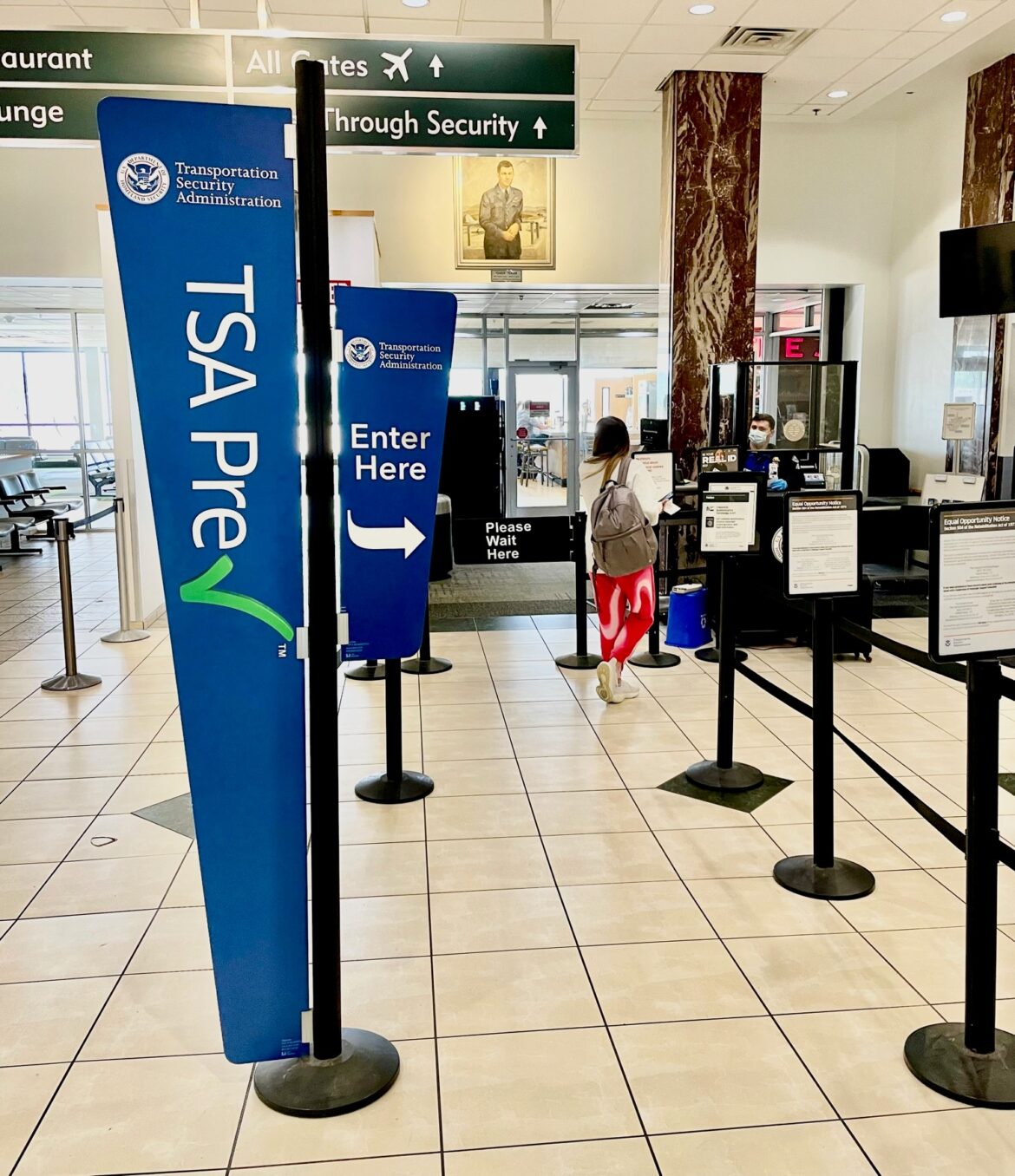Advertiser & Editorial Disclosure: The Bulkhead Seat earns an affiliate commission for anyone approved through the links below. This compensation may impact how and where links appear on this site. We work to provide the best publicly available offers to our readers. We frequently update them, but this site does not include all available offers. Opinions, reviews, analyses & recommendations are the author’s alone, and have not been reviewed, endorsed, or approved by any of these entities.
A few days ago, I wrote about a new video released by Homeland Security Secretary, Kristi Noem. It was to play on a continuous loop at TSA checkpoints around the country. The 36-second message blames the Democrats for the funding impasse that has left airport staff unpaid and passengers facing mounting delays. Many airports have taken issue with the messaging and the video has now been rejected by several major airports over concerns that it crosses into political territory.
Traditionally, the videos displayed at TSA checkpoints were designed to be informational, addressing topics such as travel safety or federal identification requirements like REAL ID. This new video marks a significant departure. Instead of focusing on travel-related updates, Noem’s message blames the Democratic Party for the ongoing government shutdown. The change in tone and content has prompted multiple airports to refuse to display the video, as they argue that it inappropriately politicizes a space intended for neutral public communication.
The video’s transcript reads:
Hi, I’m Christine Nome, the United States Secretary of Homeland Security. It is TSA’s top priority to make sure that you have the most pleasant and efficient airport experience as possible while we keep you safe.
However, Democrats in Congress refuse to fund the federal government. And because of this, many of our operations are impacted and most of our TSA employees are working without pay.
We will continue to do all that we can to avoid delays that will impact your travel. And our hope is that Democrats will soon recognize the importance of opening the government.”
Many high-traffic airports across the country have declined to play the video on their locally controlled monitors. These are a mix of states that went blue and those that voted red, including:
- Hartsfield-Jackson Atlanta International Airport (ATL)
- Buffalo Niagara International Airport (BUF)
- Charlotte-Douglas International Airport (CLT)
- Cleveland Hopkins International Airport (CLE)
- Dallas Love Field (DAL)
- Dallas Fort Worth International Airport (DFW)
- Kansas City International Airport (MCI)
- Las Vegas Harry Reid International Airport (LAS)
- Los Angeles International Airport (LAX)
- New York John F Kennedy International Airport (JFK)
- New York LaGuardia Airport (LGA)
- Newark Liberty International Airport (EWR)
- Oakland San Francisco Bay Airport (OAK)
- Phoenix Sky Harbor International Airport (PHX)
- Portland International Airport (PDX)
- San Francisco International Airport (SFO)
- San José Mineta International Airport (SJC)
- Seattle-Tacoma International Airport (SEA)
- Spokane International Airport (GEG)
- White Plains’ Westchester County Airport (HPN)
Airport authorities in these locations have cited both ethical and legal concerns. Some officials point to the Hatch Act, a federal law enacted in 1939 that restricts political activities by government employees. In states like Oregon, additional state-level regulations reinforce these restrictions and further prohibit the display of politically motivated government messages in public facilities.
The controversy highlights an ongoing tension between federal agencies and local airport authorities over control of public messaging. While the Department of Homeland Security (DHS) maintains oversight of Transportation Security Administration (TSA) operations, many airports manage their own monitor systems independently, which allows them to reject content they deem inappropriate. Critics argue that using airport security checkpoints and other places where travelers have no choice but to watch government messaging (as a platform for partisan statements) undermines public trust.
Regardless of political affiliation, many agree that airports should not serve as platforms for partisan messaging. Informational videos explaining the shutdown’s logistical impacts, such as longer wait times or limited staffing, could help travelers understand the situation without assigning political blame. The dispute over this video underscores a broader need for restraint and impartiality in government communication. This is especially true in spaces that touch millions of Americans daily.
Anthony’s Take: This video has no place in the airports. It’s one thing to voice an opinion, but our government is supposed to support all citizens and not cast blame.
(Featured Image Credit: TSA.)
User Generated Content Disclosure: The Bulkhead Seat encourages constructive discussions, comments, and questions. Responses are not provided by or commissioned by any bank advertisers. These responses have not been reviewed, approved, or endorsed by the bank advertiser. It is not the responsibility of the bank advertiser to respond to comments.
Advertiser & Editorial Disclosure: The Bulkhead Seat earns an affiliate commission for anyone approved through the links above This compensation may impact how and where links appear on this site. We work to provide the best publicly available offers to our readers. We frequently update them, but this site does not include all available offers. Opinions, reviews, analyses & recommendations are the author’s alone, and have not been reviewed, endorsed, or approved by any of these entities.

4 comments
Both Dallas airports (not exactly a bastion of blue) and MCI also refused to play them:
https://www.dallasnews.com/business/airlines/2025/10/14/dfw-love-field-punt-on-trump-admin-video-that-blames-democrats-for-shutdown/
https://www.kansascity.com/news/politics-government/article312498258.html
Thanks, adding to the list.
Please add all three SF Bay airports: SFO, OAK, SJC.
Added. Thanks!